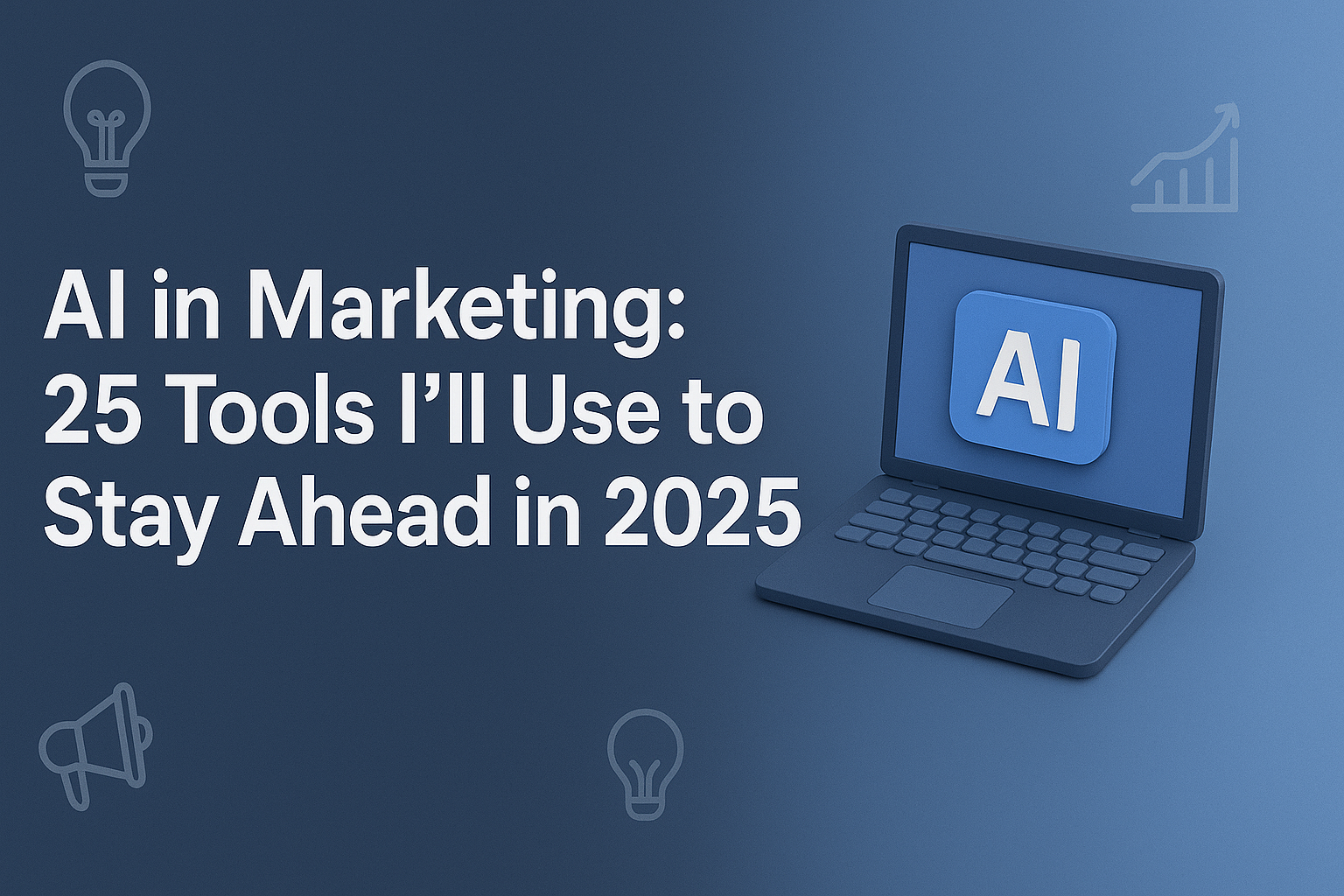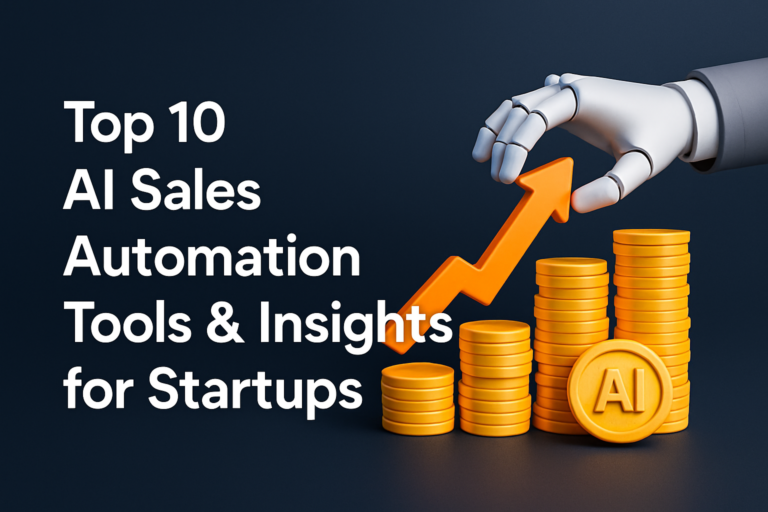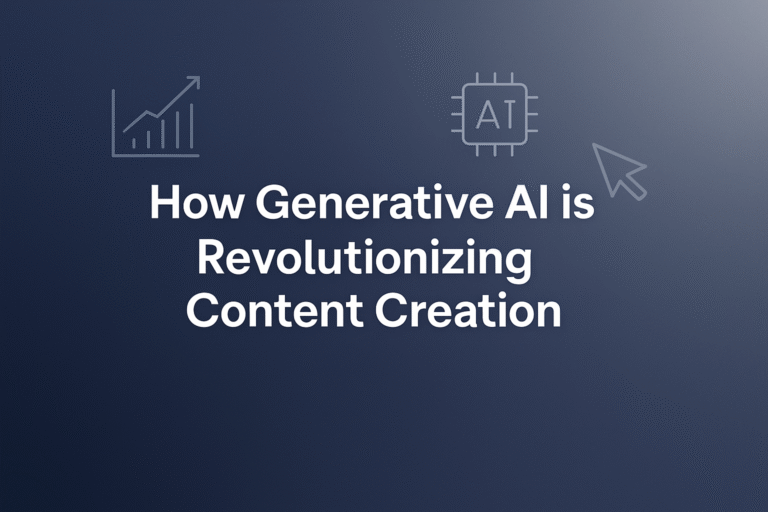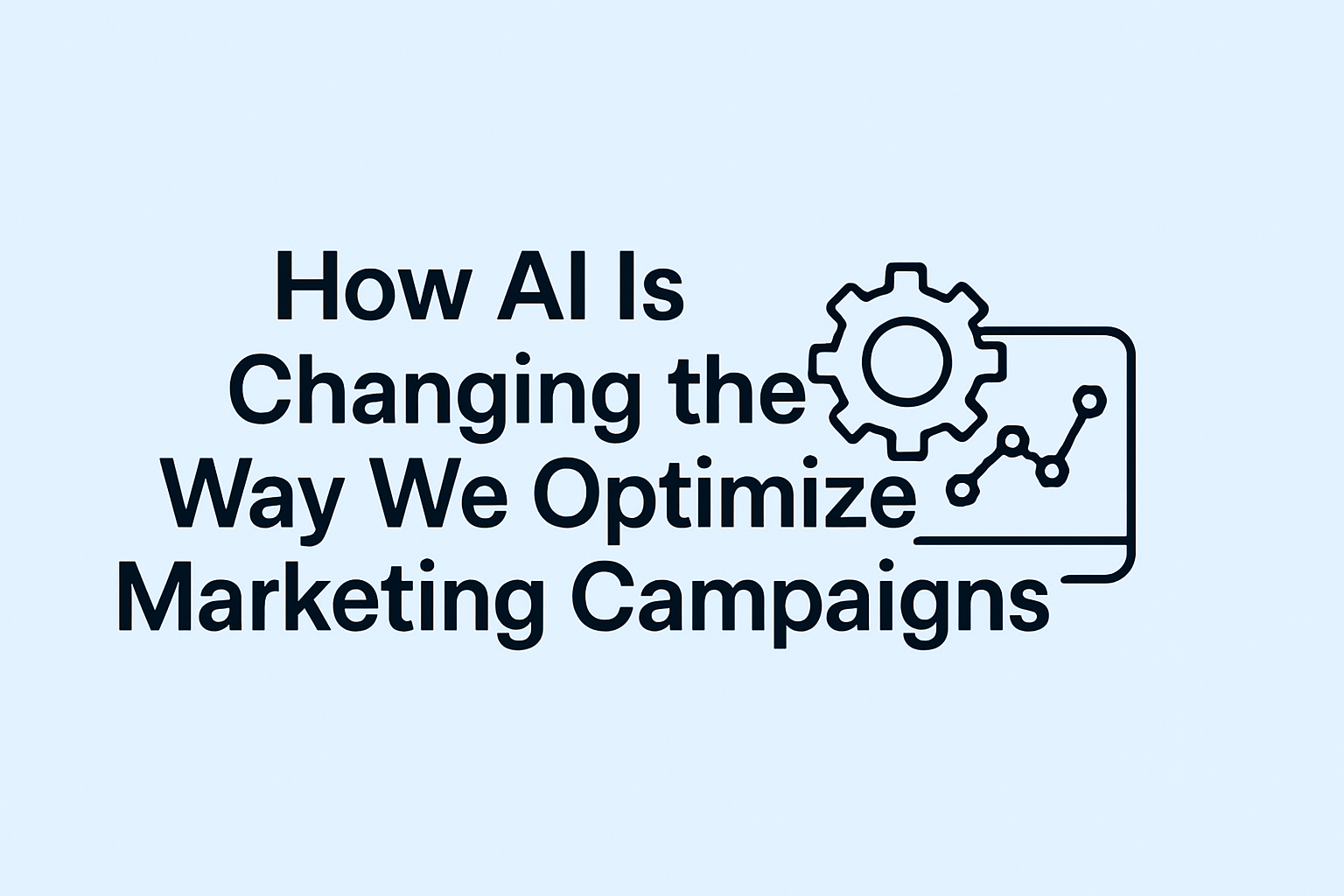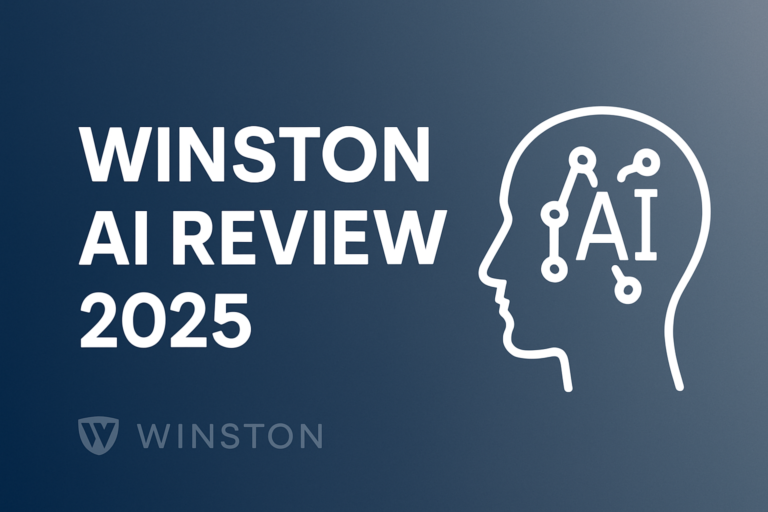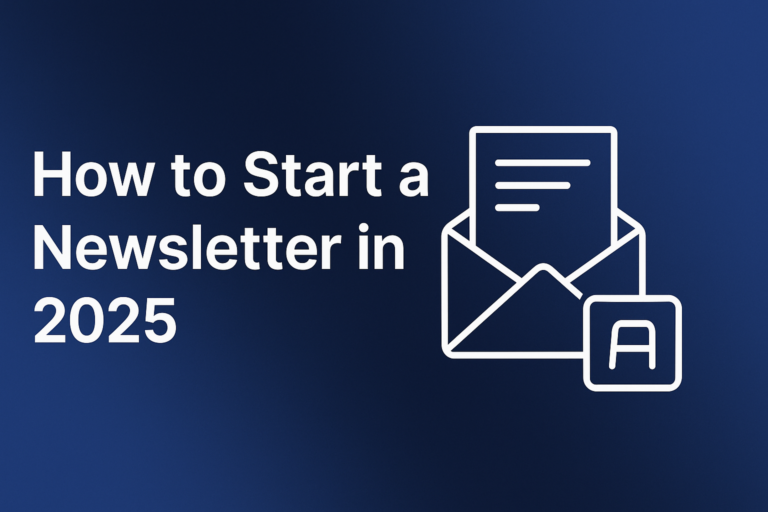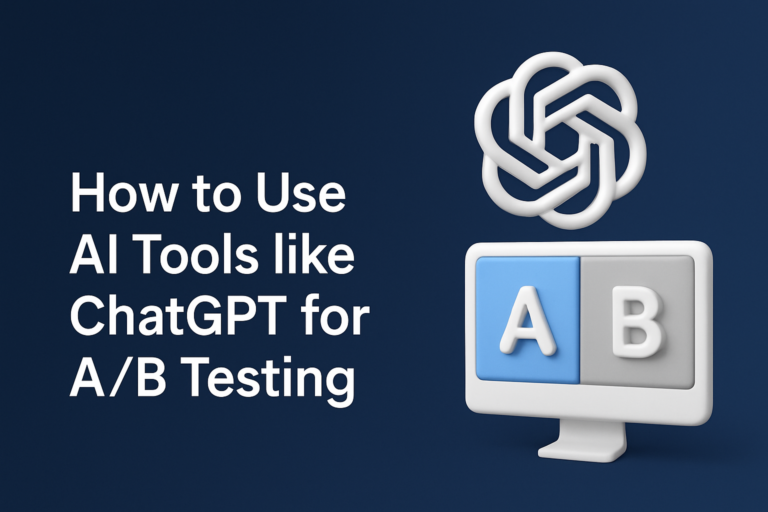AI in Marketing: 25 Tools I’ll Use to Stay Ahead in 2025
Marketing moves fast. But AI? It moves faster. In 2025, the difference between good marketers and great ones will come down to the tools they trust. This isn’t about chasing every shiny app. It’s about stacking the right ones that solve real problems, speed up campaigns, and unlock creativity.
I’ve tested, compared, and built workflows with tools that actually work. This guide shows you exactly which AI marketing tools can scale your content, optimize campaigns, and automate what drags you down.
These tools show that AI in marketing is a true competitive edge.
What Are AI Marketing Tools and Why They Matter
Think of AI marketing tools as the new marketing interns—except these ones never sleep, scale on demand, and actually get smarter over time. These tools take over repetitive tasks like scheduling posts, writing first drafts, suggesting SEO tweaks, and optimizing send times. They help AI for marketers create faster, measure deeper, and personalize at scale.
With AI for marketing, it’s not just about saving time. It’s about better outcomes. Higher click-throughs, smarter decisions, and tighter creative output. If 2024 gave you a taste of what AI can do, 2025 is when it gets serious.
How I Categorized the AI Marketing Tools
To keep this useful and not overwhelming, I’ve grouped tools by what they actually help you do. That way you’re not stuck comparing an SEO analyzer to a chatbot platform. Each of these AI marketing automation tools fit one of these six categories: content creation and copywriting, SEO and analytics, social media and influencer tools, email and CRM personalization, video creation.
That’s the only way to make AI powered marketing practical.
The Top 26 AI Marketing Tools to Use in 2025
Let’s start building your AI powered marketing stack.
Content Creation & Copywriting
ChatGPT – ChatGPT is more than a chatbot—it’s a creative workhorse. I rely on it to generate first drafts of blog posts, rephrase social media copy, and even simulate customer responses for sales training scripts. What’s powerful is how it understands tone and context, helping me match voice across different channels. With advanced prompting, you can get complex frameworks like long-form email sequences, landing page structures, or video script outlines. It accelerates ideation and smooths out the rough edges in any campaign draft. For anyone juggling multiple projects, it’s like cloning your creative brain.
Clearscope – Clearscope is my go-to for optimizing existing content. It gives you a grade based on keyword usage, semantic depth, and readability. Unlike other tools that focus on stuffing keywords, Clearscope teaches you how to write naturally while still ranking. I’ve used it to revive old blog posts, identify missing content elements, and even train junior writers on SEO-friendly language. It’s especially helpful when working with freelancers, as it provides a shared benchmark.
SurferSEO – SurferSEO is a tactical tool. It analyzes the top results for a keyword and shows what those pages include—word count, structure, keyword placement, headings. Then it helps you model your content to match or beat those benchmarks. I use it early in the content planning phase. It informs how deep to go and helps prioritize which terms matter most. For agencies or teams managing SEO at scale, Surfer is a control panel for content.
MarketMuse – MarketMuse is like having a strategist in your browser. It doesn’t just analyze content. It tells you what to write next. Based on your site and the competition, it suggests topic clusters, outlines, and gaps to fill. It’s ideal for large sites trying to build topical authority. I use it when planning quarterly editorial calendars or trying to rank in a new content category. It goes beyond on-page optimization to guide your entire content strategy.
WordLift – WordLift focuses on making your content machine-readable. That means using structured data (like schema) to help search engines understand your site. It improves search visibility and helps create rich snippets. I use it on key blog pages and landing pages to boost CTRs and make content easier to crawl. It’s also handy for managing internal linking and taxonomy on larger sites.
Data Analysis & Competitive Research
SEMrush – SEMrush helps me know what’s working for my competitors without guessing. I use it for keyword gap analysis to uncover search terms that others rank for but I don’t. The organic traffic insights and backlink reports guide where I should double down. What I love most is the Position Tracking feature. It monitors rankings daily so I can see when optimizations start making an impact. It’s like getting a performance scorecard every morning. For PPC planning, their ad copy analysis gives me clues on which messages drive clicks. SEMrush isn’t just a tool. It’s a playbook for smarter campaigns.
Ahrefs – Ahrefs gives you the keys to understand your niche’s entire backlink ecosystem. I use it to find high-authority link opportunities and monitor lost or broken backlinks that need fixing. Their Content Explorer is a hidden gem—it shows top-performing content by niche and backlink count. I’ve uncovered so many blog post ideas this way. Their keyword explorer reveals untapped long-tail keywords competitors miss. Ahrefs is essential when I’m auditing SEO campaigns or planning a content sprint with link-building in mind. It turns gut instinct into data-backed decisions.
Social Media Management & Engagement
BrightEdge – BrightEdge lets me see beyond surface-level analytics. I use it to analyze which keywords are driving traffic through organic search and social combined. It’s the only tool I’ve used that connects SEO and content marketing strategy in one view. The AI recommendations help improve web performance without second-guessing. It scores every page and suggests fixes that directly move the needle. For enterprise brands juggling thousands of URLs, BrightEdge keeps campaigns sharp and consistent. I treat it as a command center for visibility, especially when managing multiple marketing AI tools across teams.
Crimson Hexagon – Crimson Hexagon excels in sentiment analysis. I track customer opinions, emerging trends, and market shifts through visual dashboards that update in real-time. When launching new campaigns or monitoring brand perception, this tool lets me adjust messaging fast. It’s particularly useful for campaign testing. I can assess reactions by region, language, or interest group to segment audience response. Social listening gets a strategy layer thanks to Crimson Hexagon—critical for brands embracing AI and marketing together.
Socialbakers – Socialbakers combines social publishing with performance tracking. I use it to plan and optimize posts across Instagram, LinkedIn, Facebook, and more. What sets it apart is the AI-driven content scoring system. It predicts how well a post will perform before it’s live. I also like the influencer identification tool—it ranks potential partners based on engagement rate and brand alignment, not just follower count. For brands managing multiple channels or teams, it’s a solid unifier within a marketing AI ecosystem.
Hootsuite / Zoho Social – Hootsuite is my reliable scheduler. I batch a week’s worth of posts, set best times via their optimizer, and walk away knowing engagement will stay consistent. Zoho Social is a great alternative with a better analytics dashboard if you want deeper reporting. Both tools offer bulk scheduling, social inbox monitoring, and team workflows. In 2025, these tools are still among the most digital marketing tools worth keeping in your stack.
Email Marketing & CRM Personalization
Drift – Drift’s AI chatbots are more than just greeters—they qualify leads, book meetings, and drive conversions. On several landing pages, I’ve used Drift to engage visitors instantly instead of waiting for them to fill a form. Their playbooks allow targeting based on user behavior. That means if someone visits a pricing page twice, Drift can trigger a special offer. It’s smart, fast, and more human than you’d expect from a bot. A must-have for anyone getting serious about AI driven marketing.
Intercom – Intercom is where AI meets real-time conversation. I use it to deploy live chat, email sequences, and help desk support—all with customer context. Intercom’s resolution bot cuts down on ticket volume while keeping customers happy. Their Smart Campaigns feature triggers personalized flows based on user actions, like onboarding progress or churn signals. It’s more than a support tool—it’s a conversion machine for anyone scaling with AI in marketing.
ManyChat – ManyChat helps me build automated chatbot flows for Messenger and Instagram. What’s different is how quickly you can build complex flows without code. I’ve built lead capture bots that deliver ebooks, segment audiences, and follow up—all inside the app. It turns social media into a lead gen funnel. It’s also great for abandoned cart recovery in eCommerce. If you’re sleeping on DMs, this wakes them up. ManyChat fits well within stacks featuring AI tools for marketing.
Conversica – Conversica acts like a sales rep who never forgets to follow up. It handles lead qualification and nurtures leads via email or SMS, asking questions and responding with tailored replies. It’s perfect for B2B sales pipelines where prospects need multiple touches. I’ve seen Conversica keep leads warm until the sales team was ready. The AI understands natural language well enough to carry long conversations—exactly the kind of tool that defines AI marketing automation tools.
SeventhSense – Email timing can make or break your open rates. SeventhSense uses behavioral analytics to figure out when each contact is most likely to engage. It then optimizes send times per subscriber. That’s massive if you’re sending to large lists. I’ve seen open rates increase by 15–25% just by changing timing. It also works with platforms like HubSpot and Marketo. If you’re using free AI tools for marketing, this one’s a surprising standout.
Mailchimp / Constant Contact – Both of these are classics, but their AI upgrades have made them more than list managers. Mailchimp now offers content suggestions, predictive insights on audience engagement, and product recommendations for eCommerce. Constant Contact’s AI-driven personalization helps with subject line testing and optimal send frequency. These tools are great for small to midsize businesses looking for smart, automated email solutions that don’t need coding. They’re also good entry points if you’re trying out free AI tools for marketing.
Marketing Automation & Workflow Integration
Marketo – Marketo isn’t just automation—it’s orchestration. I use it for lead scoring, customer journeys, and A/B testing. Its AI helps personalize content across emails, ads, and landing pages. The real power comes when you integrate it with CRMs and content hubs. You can track full customer journeys from anonymous click to closed deal. If your team’s ready to scale with precision, Marketo brings the muscle. Easily one of the best AI tools 2025 has for serious automation.
InboundWriter – InboundWriter helps me choose topics that are most likely to rank and resonate before I write a word. It predicts performance based on your existing content and audience interests. It’s great for building content strategies with intent and traffic in mind. I use it before outlining blogs or planning resources for lead magnets. It ensures we don’t waste effort on content that won’t move the needle—especially valuable when using AI for marketers focused on ROI.
Zapier – Zapier is the glue behind my marketing stack. It connects over 6,000 tools—automating tasks between CRMs, forms, email platforms, analytics, and more. I’ve built zaps that sync lead data from Facebook Ads into Google Sheets and Slack in real time. No coding. No time wasted. If you want to remove manual work and scale operations, this one belongs in your toolkit of marketing AI tools.
Canva Magic Studio – Canva isn’t new, but its AI features are a creative powerhouse in 2025. With Magic Write, I can draft ad copy, social captions, or blog outlines right inside the design tool. Magic Design takes it even further by turning raw prompts into branded visuals in seconds. I use it to mock up email headers, Instagram carousels, and presentations without needing a designer. For teams who juggle content and design, this bridges the gap. It’s visual thinking, accelerated.
Pictory – Pictory takes written content and turns it into videos. I plug in blog posts or webinar transcripts and it builds videos complete with scenes, subtitles, and stock footage. The AI picks visuals that match the text automatically, and the result feels polished enough for YouTube or ads. This has become my shortcut for repurposing top-performing blogs into visual formats without burning time or budget. Tools like Pictory prove why it’s worth knowing the best AI tools 2025 has early.
Saleshandy – Saleshandy automates cold email outreach with precision. It personalizes every email in a sequence using smart variables and tracks opens, clicks, and replies. What makes it different? The AI analyzes which emails work and automatically optimizes follow-up messages. I’ve used it to test outreach scripts and scale prospecting without sacrificing deliverability. If you’re in B2B or run outbound campaigns, Saleshandy gives your team more swings—without more work.
Originality.AI – When publishing AI-generated content, trust matters. Originality.AI checks for plagiarism and detects AI-written text across blog posts, whitepapers, and landing pages. I use it as a final layer of content quality control before publishing. For agencies or freelancers, it helps keep work transparent and high-integrity. And with Google cracking down on low-quality AI content, this tool acts as a built-in reputation guard.
How to Choose the Right AI Marketing Tools
Choosing the right AI tools for marketing isn’t about grabbing the trendiest platform. It’s about solving real problems and enhancing what’s already working. Start with your current goals. Are you trying to grow organic traffic? Streamline workflows? Automate follow-ups? Once you define that, the right tools reveal themselves. I always test a free version first if one’s available.
This shows how intuitive the tool is and whether it plugs into my stack without headaches. If it takes more than 20 minutes to understand the value, I move on. Integration matters too. A great tool that doesn’t play well with others can break your workflow.
Finally, factor in pricing and scalability. Will this tool grow with your business or will you outpace its capabilities in six months? My go-to checklist looks like this:
- Does this tool solve a key problem right now?
- Can I integrate it with my CRM, CMS, or analytics setup?
- Are other marketers like me using it successfully?
- Is the support team responsive and helpful?
- Does it align with how I work—automated, fast, and modular?
Don’t pick based on hype. Pick based on fit.
Future Trends & Getting Ahead in 2025
AI in marketing is no longer optional. It’s expected. In 2025, the edge will come from how well you apply it. One major trend is hyper-personalization at scale. It’s not just about adding a first name to an email anymore. It’s tailoring entire campaigns based on micro-segments and behavioral predictions. Tools like SeventhSense and Intercom already point in this direction.
Another growing force is conversational AI. From chatbots to voice assistants, customers expect responses that feel natural and human, not robotic. The better your AI sounds, the more your brand resonates. Predictive analytics will take center stage too. Knowing what your customer will need tomorrow means you can serve them today—with precision.
And let’s not ignore visual AI. Tools that edit videos, generate branded content, or design layouts on demand will shift how we build creative. Staying ahead means testing early. It means training teams, auditing your stack quarterly, and setting AI goals just like any campaign goal. Those who wait will chase. Those who prepare will lead.
Building Your AI-Powered Marketing Stack
AI in marketing tools aren’t a magic bullet. They’re a power-up. When stacked right, they make your campaigns smarter, faster, and more profitable.
You’ve seen 26 tools here that I’ve personally tested, tracked, or integrated. From writing smarter copy with ChatGPT to scaling workflows with Zapier, the opportunity in 2025 is massive—but only if you build with purpose.
This isn’t about jumping on trends. It’s about picking tools that remove friction, deepen your insights, and let you focus on strategy instead of execution.
Whether you’re a solo marketer or leading a growing team, the path forward is clear: lean into automation, personalize with intent, and optimize without burnout.
Which of these tools are already in your stack? Which one are you most excited to try? Let’s swap notes.

